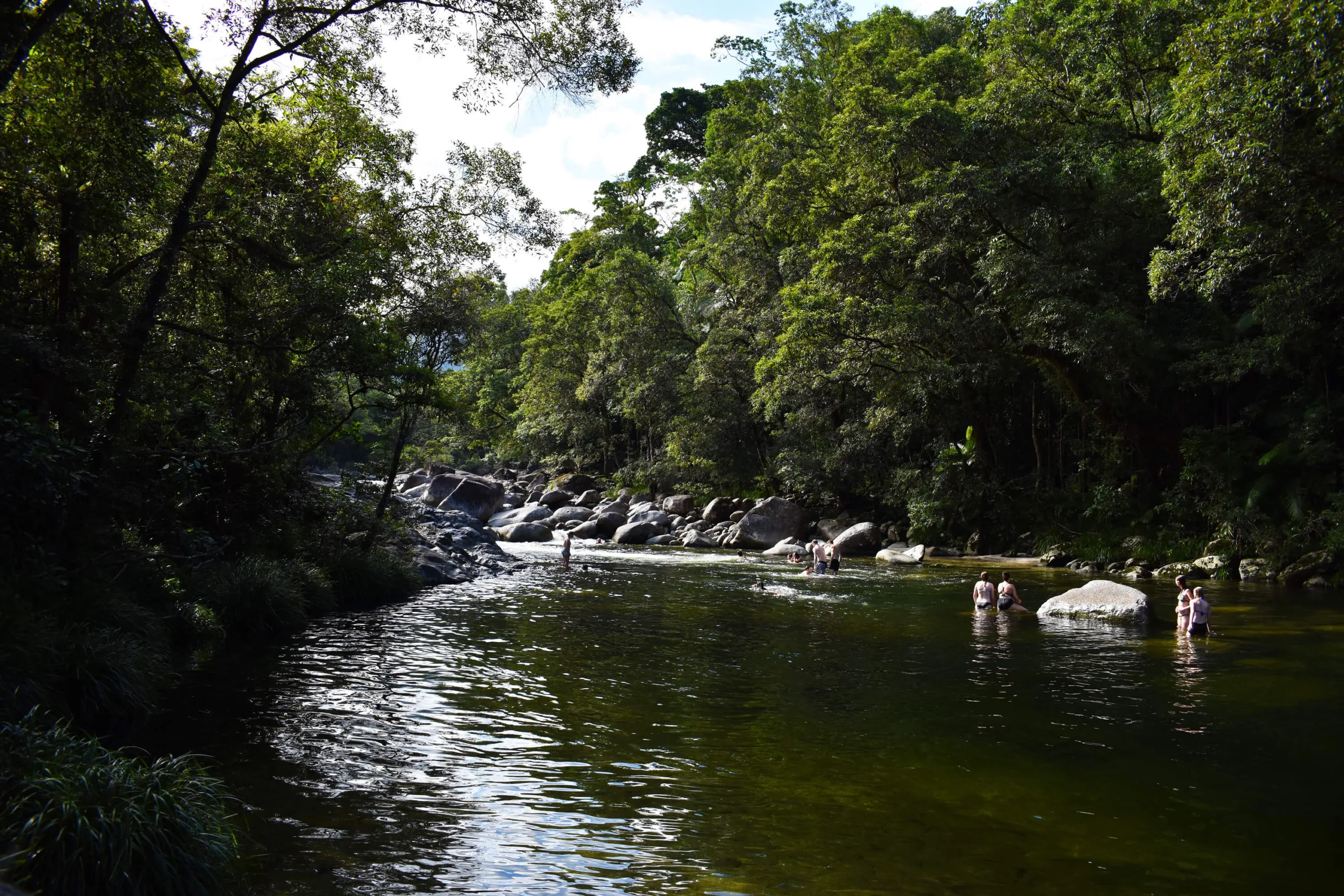
By: Brianna Bjordahl
Daintree to Chillagoe: A “Study” of Perspiration and Evaporation
This past week, SFS Australia experienced firsthand how quickly the landscape can change in Far North Queensland and how this change affects the ability for sweat to evaporate on the human body. This “study” was conducted over the course of four days with our 22 students as we traveled north to the Daintree Rainforest and then west to Chillagoe, an abandoned mining town in the Outback.
In our two-hour drive northward along the coast, the surface area of leaves grew as beads of sweat accumulated on our brows. While en route to the Daintree, students were able to swim in Mossman Gorge. Our findings indicated that this experience was an effective cooling mechanism for sweat accumulation in transit.

Mossman Gorge
Once in the Daintree, students ventured through the 110-200 million-year-old vegetation and learned about the Type 1a Rainforest, which is the optimal formation for rainforests in Australia. The ancient plants also provided optimal shade conditions for the students in the hot and moist environment.

In the Daintree
To continue our comparative study, we arrived in Chillagoe and found it hot and dry. The desert air was a welcome change as it passed over our skin and took our perspiration with it. Without the large leaves of rainforest trees offering their protection, the students sought refuge from the intense Australian sunshine in limestone caves that have formed as the landscape was compressed millions of years ago.

Touring the limestone caves. Photo courtesy of Anne McGarvey
In conclusion, our study found that proper hydration is key to travel in Far North Queensland and we recommend that future research looks into the best time of day to find ice cream in both study areas.
Related Posts

Camila Rojas: Alumni Spotlight⭐

